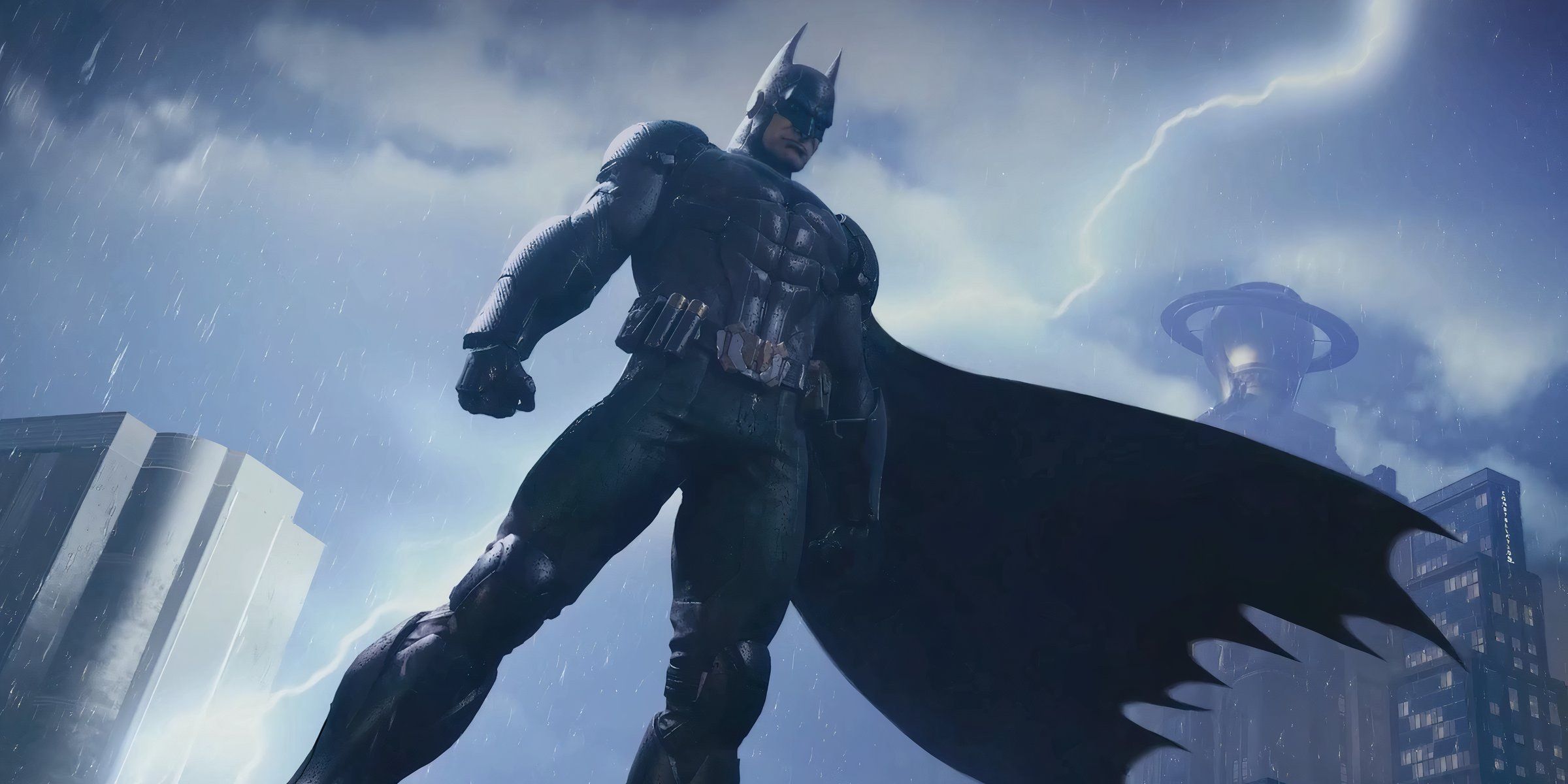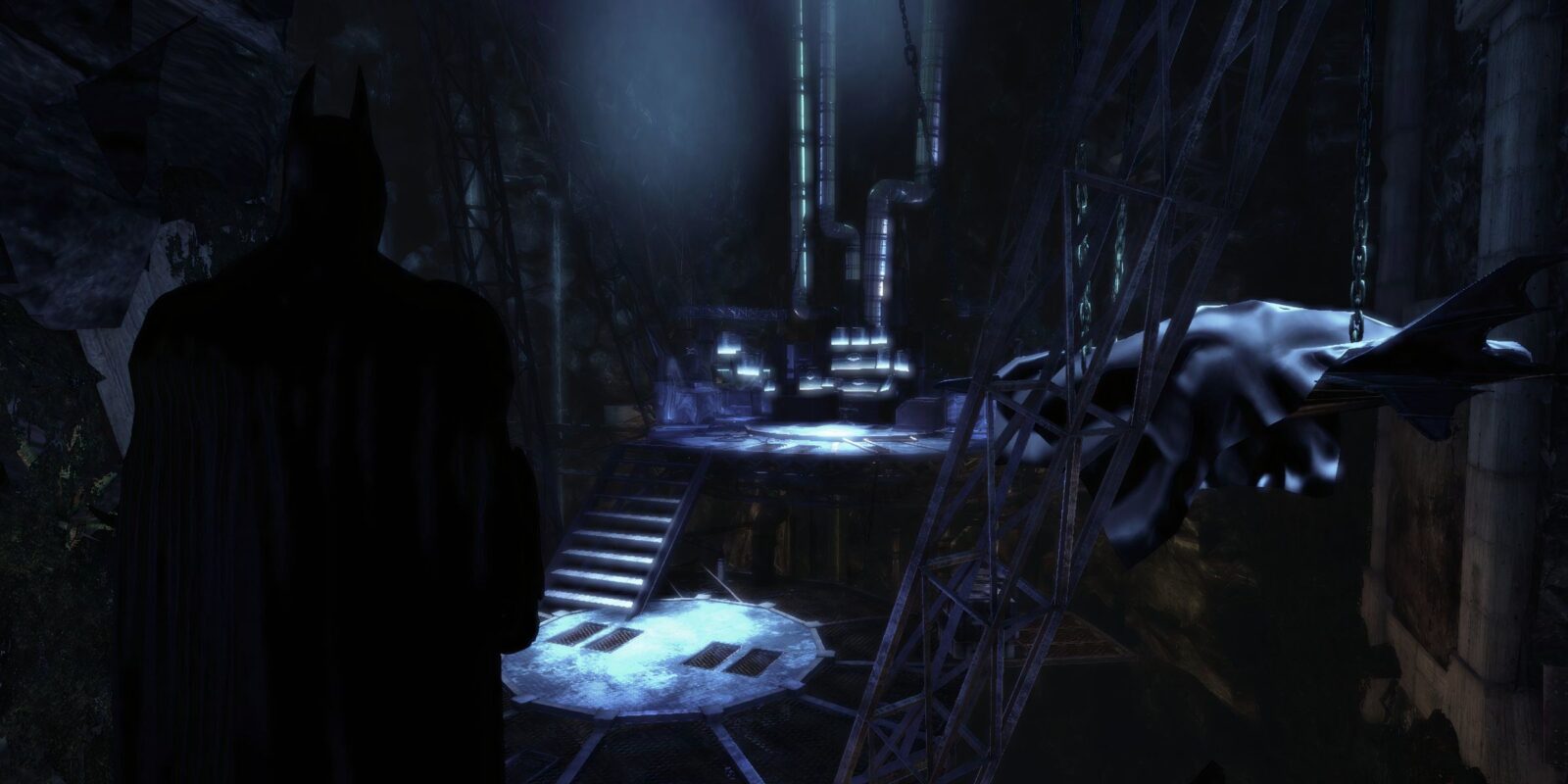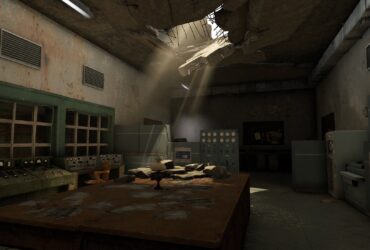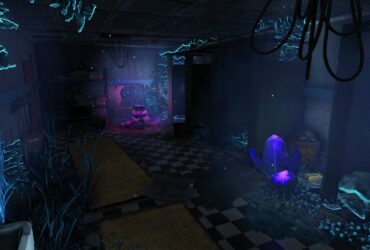Batcaves are essential in Batman media, but they haven’t been a staple of the Arkham games. Indeed, while Batman may typically dwell in his cavernous lairs, if not on patrol in Gotham City or masquerading as Bruce Wayne at a fundraiser gala, the Arkhamverse revolves almost fully around entries where players experience a single night as Batman.
The Arkham games have largely done a well enough job explaining why he wouldn’t be able to simply whisk himself away to a Batcave as the stakes and urgency of whatever plot is brewing is usually of the utmost importance, such as needing to have a gradual drip-feed of accumulated gadgets as the game progresses and Protocol 10 approaches, and yet Batman: Arkham Origins and Batman: Arkham Shadow are evidence that multiple visits to a Batcave can be highly valuable. Either way, the Arkhamverse does feature a Batcave, or at least something akin to one, in every game thus far, and some eke their way to being superior in comparison.

Related
The Arkhamverse’s Prequel Future Should Be a Marathon, Not a Sprint
While the number of years between Shadow and Asylum is still vague, Batman’s Arkham series will hopefully take its time in the prequel era.
S-Tier Arkhamverse Batcaves
Ironically, Batman: Arkham Origins and Suicide Squad: Kill the Justice League’s Batcaves—two separate caves, the former beneath Wayne Manor and the latter beneath Metropolis—are the only traditional, standard Batcaves in the Arkhamverse.
Batman: Arkham Origins is the only Arkhamverse installment to feature Alfred Pennyworth in-game besides Batman: Arkham Knight, wherein he appears on Batman’s gauntlet comms and for half a second at Wayne Manor before it explodes. In Origins, Alfred spends all of his time idling at the Batcave and players can speak with him for copious lines of dialogue and “Alfred Wisdom” granting XP.
This Batcave affords several poignant story beats between Bruce and Alfred and is a boon as it allows those moments to stew, such as when the two argue over the perceived need for Bruce to be Batman or when Bruce resuscitates Alfred after Bane destroys the Batcave. Likewise, the Batcave has a string-laden detective’s corkboard—something Batman: Arkham Shadow would later implement in the Pigsty—players can overlook completely but that directly reveals the existence and relevance of a figure named ‘Red Hood’ before he is fully revealed or alluded to in the story as Joker.
Having a dedicated Batsuit chamber is a fun way to swap Batsuit costumes in-game, too, and an area where Bruce would train allows players to access Origins’ challenge mode without leaving the story campaign and accessing the challenge mode from the main menu. Overall, with how much it serves as a story set piece as well as its richness of interactivity, it’s difficult to overstate the significance of Origins’ Batcave.
A-Tier Arkhamverse Batcaves
Shadow’s makeshift yet cozy Batcave is a necessary in-between hub where players swap from one disguise to another—Batman by night and Irving “Matches” Malone by day. Its features are quaint: a Batcomputer where Bruce speaks with Alfred and Barbara, who becomes Oracle during Batman: Arkham Shadow’s events; a menu to access combat and predator challenges; a menu allowing players to return to previously visited regions Gotham City to seek out any undiscovered Rat King collectibles; and an answering machine with intermittent voicemails to listen to.
An enormous statue that is eventually yanked down via the Batclaw stands erected behind the Batcomputer and foreshadows Azrael and the Order of St. Dumas, as do the many ancient rune collectibles players decipher for audio log reconstructions from none other than Cyrus Pinkney while he was studying Blackgate Island. There’s a richness to Blackgate’s history that this cave is inherently a part of, whether a single-minded Batman cares to acknowledge it explicitly or not, and that goes a long way in making this particular Batcave special, even if it’s special because of the prison’s lore and not the cave specifically.

Related
Batman’s Arkhamverse Future Should Be Forever Marred by Suicide Squad: Kill the Justice League
Suicide Squad: Kill the Justice League tugs at Batman left and right and one fateful choice made should haunt Bruce Wayne and the Bat Family forever.
B-Tier Arkhamverse Batcaves
Batman: Arkham Asylum’s Batcave, like Shadow’s, is one of an unknown number of contingency bases where only a handful of functions are available. But, while Asylum’s Batcave earns brownie points as the first Batcave visited in the series and due to it having a neat location and aesthetic underneath Arkham Asylum itself, its overall significance is minor as players only go there twice; once to retrieve the Batclaw, and then later to formulate an antidote and upgrade the Batclaw to the Ultra Batclaw as Poison Ivy’s Titan-infected plants infiltrate the Batcave and destroy the Batcomputer.
One incredible detail in this Batcave is a Batwing that hangs suspended on chains and has a tarp thrown over it. When players visit the Batcave for the second time, after the Batwing has been summoned to provide a drop pod containing the Line Launcher, the chains hang loose with the Batwing gone to illustrate that it was one and the same.
C-Tier Arkhamverse Batcaves
- Batman: Arkham Knight
- Suicide Squad: Kill the Justice League.
Batman: Arkham Knight’s clock tower is, in fact, not a Batcave and yet it makes for a suitable lair decked out with an impressive Batcomputer nonetheless. The room transforms at the activation of a clandestine bust scanner, which then lowers bookshelves into the floor from where the Batcomputer rises and closes shutters on the clock and walls to completely darken the room beyond the dim glow of a projected display. The most significant element of the clock tower base is that it’s Barbara’s and not Bruce’s, and that’s evident in the way she’s decided to furnish it while it’s in its ordinary clock tower state. Between leisurely comforts, a photograph of her and Tim Drake, and a Remote Hacking Device-activated Batsuit display, Barbara’s clock tower is as homey as it is a reminder of the tragedy that befell her.
Knight’s Wayne International Plaza penthouse—also not a Batcave—is akin to a Batcave as it stores a copy of Batman’s V7.43 Batsuit and a suite of gadgets. Like Batman: Arkham Shadow would also emulate nearly 15 years later, Knight’s penthouse has an answering machine with voicemails from the likes of Vicki Vale, Lex Luthor (a monumental DC mythology Easter egg at the time), and Kate Kane.
Hush’s egregiously abrupt side quest occurs at Batman: Arkham Knight’s Wayne International Plaza penthouse, giving players only a few meaningful reasons to visit. While both the clock tower and the penthouse have a ton of personality and operate as locations where either Oracle or Lucius Fox can work or access equipment, the clock tower and Wayne International Plaza are the least interactive and traditional of any Arkhamverse ‘Batcave’ and it’s difficult to compare them to the series’ genuine Batcaves squarely as a result.
Suicide Squad: Kill the Justice League’s Batcave may be one of two full-fledged franchise Batcaves, but it pales in comparison to nearly every iteration in the series. On the one hand, it is a treat to walk around a polished Batcave in Suicide Squad: Kill the Justice League, which is a feat that was never achieved in the Arkham games with Batman either early into his crime-fighting career or forced to resort to incomplete backup Batcaves.
This cave is easily the most cartoonish of them all in terms of actually looking like a Batcave with giant bat symbols and impressive technology, demonstrating that Bruce likely spent a lot of time there in the days since Knight and is likely his new primary Batcave after Wayne Manor went up in flames. It makes sense to see a Batcave so elaborate and gargantuan below Metropolis as Batman is a member of the Suicide Squad’s Justice League and is publicly honored and commemorated in Metropolis, much less the city’s Hall of Justice headquarters for the League and the interactive Batman Experience exhibit that details his story in the Arkhamverse from the events of Batman: Arkham Asylum onward.
It’s also exciting to see a holographic recording where Bruce shows the most love and compassion to his Bat-family than he has in the whole series prior and, shortly after, the Batcave sets the stage for a boss fight with the Brainiac-infected Batman clone/fear toxin-induced Demon Bat.
However, marks need to be docked when it comes to the emptiness of this vast cave and how lazily Batman’s villain mementos are stored, despite how neat it is to see Mad Hatter’s pop-up picture book, Deathstroke’s staff, and, oddly, Scarecrow’s mask (technically his face and not likely to ever be properly explained, much less explained as Batman having beheaded Scarecrow). There also isn’t anything to do there before it becomes a Demon Bat sequence, but it’s one of few remarkable story-based missions in Suicide Squad that actually reflects on Arkham lore nonetheless, and a future Batman game will hopefully be able to use this Batcave as a touchstone.













Leave a Reply